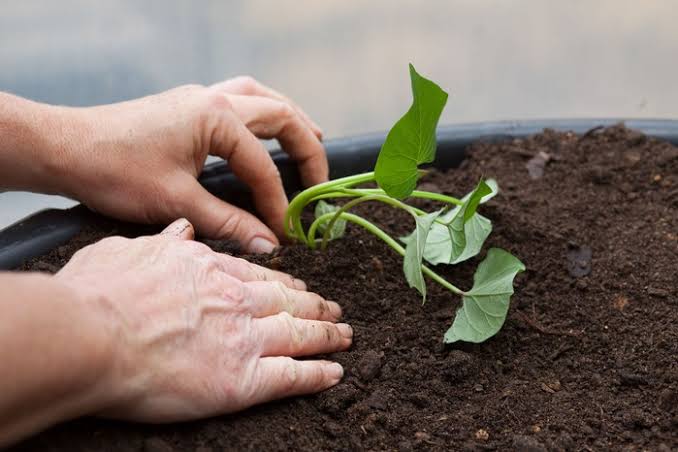Sweet potatoes are more than just a tasty side dish—they’re a powerhouse of nutrition and one of the easiest crops you can grow at home. Whether you’re gardening in the United States, United Kingdom, or Canada, learning how to plant sweet potatoes will open the door to an abundant harvest. The best part? You don’t need a massive garden—just patience, the right conditions, and a few simple steps. If you’re ready to transform your garden, it’s time to discover how to plant sweet potatoes today!Why Grow Sweet Potatoes?Before diving into the how-to, let’s talk about why sweet potatoes are worth growing:Nutritional powerhouse: Packed with fiber, vitamins A and C, and antioxidants.Versatile in the kitchen: Perfect for fries, soups, casseroles, or baking.Long storage life: When cured properly, they can last for months.Low maintenance: Once established, they’re hardy and require little care.Understanding Sweet PotatoesUnlike regular potatoes, sweet potatoes aren’t grown from “seed potatoes.” Instead, they’re grown from slips—sprouted shoots that grow from a mature sweet potato. These slips are what you’ll plant in your garden.Step-by-Step: How to Plant Sweet PotatoesStep 1: Prepare SlipsBuy healthy organic sweet potatoes.Place them in water or damp soil until shoots (slips) sprout.When slips are 6–8 inches long, gently twist them off.Place slips in water until roots form.💡 Tip: Start this process 4–6 weeks before your last frost date.Step 2: Choose the Right LocationSweet potatoes love full sun—at least 6–8 hours daily.They prefer loose, well-drained sandy soil.Avoid clay-heavy soil, which can cause poor root development.Step 3: Prepare the SoilWork compost or organic matter into the soil for nutrients.Create raised beds or mounds 8–12 inches high for better drainage.Space rows about 3 feet apart to give vines room to spread.Step 4: Planting SlipsPlant slips 12–18 inches apart.Bury slips up to the first leaves, covering roots and stem.Water thoroughly after planting.Step 5: Care and MaintenanceWatering: Keep soil consistently moist, especially during the first few weeks. Once established, sweet potatoes are drought-tolerant.Weeding: Mulch around plants to suppress weeds and retain moisture.Fertilizing: Use a balanced fertilizer, but avoid too much nitrogen (it causes leafy growth instead of tubers).When to Harvest Sweet PotatoesHarvest usually occurs 90–120 days after planting.Look for yellowing leaves as a sign they’re ready.Gently dig with a garden fork to avoid damaging the tubers.💡 Tip: Cure sweet potatoes by keeping them in a warm, humid place (around 80–85°F / 26–29°C) for 7–10 days. This improves flavor and helps them store longer.Common Mistakes to AvoidPlanting too early: Sweet potatoes need warm soil (at least 65°F / 18°C).Overwatering: Causes tuber rot.Crowding plants: Leads to smaller yields due to lack of space.Ignoring frost dates: These plants are highly frost-sensitive.Growing Sweet Potatoes in ContainersNo garden? No problem! You can grow sweet potatoes in large containers or grow bags.Use a container at least 15–20 gallons.Ensure good drainage holes.Plant slips in loose, sandy soil mix.Let vines trail or provide a trellis.ConclusionFrom slips to harvest, growing sweet potatoes is easier than most people think. With a little preparation and care, you’ll enjoy a rewarding crop that’s as nutritious as it is delicious. Whether you have a backyard garden, raised beds, or even just containers, this is the perfect crop for beginners and experienced gardeners alike.✨ Don’t wait—discover how to plant sweet potatoes today and enjoy the satisfaction of growing your own sweet, nutrient-rich harvest!

